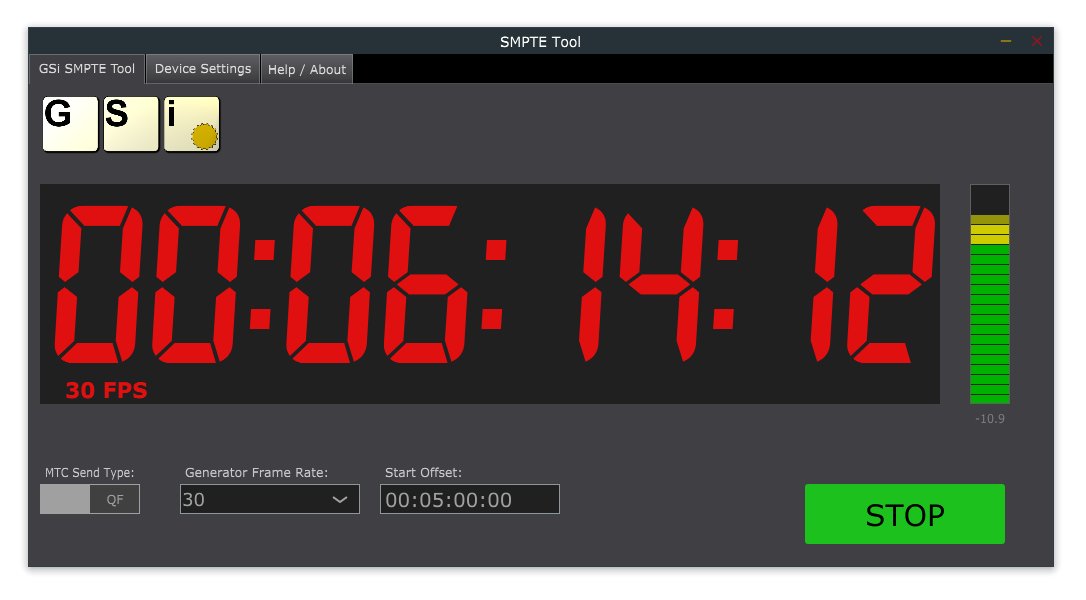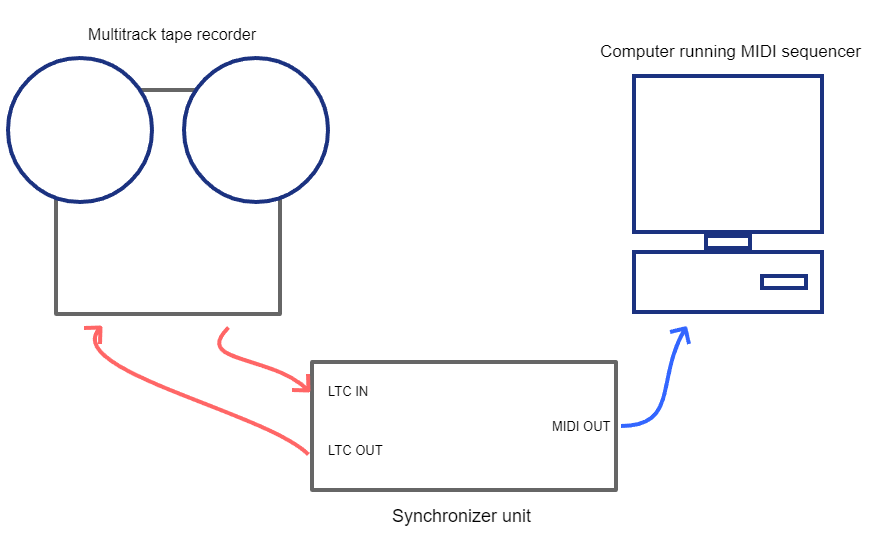 GSi SMPTE Tool
GSi SMPTE Tool is a free utility for Windows and for macOS that can generate or decode the LTC SMPTE signal and translate it to MTC.
Confused? First, let's have a look at all these acronyms:
- SMPTE: Society of Motion Picture and Television Experts, an entity in the US that creates standards about technologies in the audio and video industry;
- LTC: Linear (or Longitudinal) Time Code, a method of creating a synchronization signal that can be transferred between different devices;
- MTC: Midi Time Code, a part of the MIDI standard that relates to time code synchronization between MIDI units.
This seems very old stuff, and partially it is, but surprisingly enough, the SMPTE LTC is still much used today because it's the easiest method to synchronize
units from different manufacturers that don't share a more modern sync method.
The advantage of the SMPTE LTC signal is that it works under audio bandwidth, i.e. it's a sound that you can actually hear (nasty as hell, similar to a Fax machine or an old modem),
and transfer through audio cables, or record on any kind of audio recorders, either analog or digital, and manipulate as you wish.
In this case, the SMPTE Tool can generate the LTC signal or can decode it in order to translate it back to MIDI TIME CODE information that can be used to synchronize a
MIDI sequencer (or D.A.W - Digital Audio Workstation, as we call them today) to a tape recorder. This system can also be of kind "
one to many", i.e. there can be one LTC source and
many destination (in old lexicon it would be
one master and multiple slaves), so for example, other than synchronizing a DAW to a tape machine, one can synchronize
lighting computers, mixing desk automations, audio players, video players, all at the same time perfectly following the LTC via simple audio cables.
Let's have a look at the following picture:

In order for this to work, the LTC signal must be previously recorded onto one track of a multitrack tape machine, for the whole length of the song we're going to record, maybe some extra minute,
and possibily on one of the edge tracks, for example, if I intend to record a 4 minute song on my 16-track tape recorder, I'll
stripe 5 or 6 minutes of SMPTE signal on track 16 and,
while tracking audio, I'll avoid using track 15 if possible, or at least avoid using it for bassdrum or bass guitar sounds, that could create some interference with the adjacent LTC signal.
Once done, the audio output from track 16 goes back to the synchronizer, and the MIDI output from the the latter will go to the computer running the MIDI sequencer.
As soon as I press PLAY on the tape machine, if everything was setup properly, the sequencer should start playing in perfect sync.
In an era where computer would only record MIDI and no audio, you had to buy a synchronizer hardware, such as a MOTU MTP, or an Opcode 8Port/SE, there were many... and some were very expensive.
But now that all computers have audio, the synchronizer unit can be a software like GSi SMPTE Tool that sends and receives the LTC signal using the computer's audio interface.
For the internal MIDI connection between SMPTE Tool and a DAW sofware, you can use something like
loopMIDI on Windows,
or if you own a multi-port MIDI interface like our
GSi 5x5, you can send the MTC out from SMPTE Tool to a port,
and use a short MIDI cable to connect that output port back to the interface on one of its MIDI input ports, that will be used by the DAW to receive the MTC information.
Under macOS you can use the
Audio Midi Setup and open the
Midi Studio to configure the
IAC Driver.
